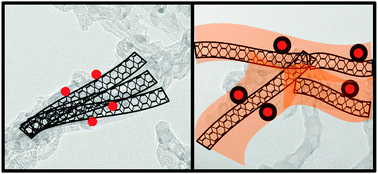ABSTRACT: A magnetic CNTs–C@Fe–chitosan composite (CNTs–C@Fe–CS) was prepared based on as-prepared carbon nanotubes (APCNTs). The metal nanoparticles in APCNTs could be utilized directly without any purification treatment, and the carbon shells provide an effective barrier against oxidation, acid dissolution, and movement of the MNPs, thus ensuring the long-term stability of CNTs–C@Fe–CS. The results showed that CNTs–C@Fe–CS contained more abundant oxygen and nitrogen containing functional groups after chitosan modification and the composite had good magnetization characteristics, even in acidic solutions. Then CNTs–C@Fe–CS was used as an adsorbent for the removal of tetracycline from aqueous solutions. Adsorption experiments indicated that CNTs–C@Fe–CS have a good adsorption capacity (qe) of tetracycline (104 mg g1). The Freundlich isotherm model fitted the experimental data better than the Langmuir isotherm model. Kinetic regression results showed that the adsorption kinetics was more accurately represented by a pseudo second-order model. Intra-particle diffusion was involved in the adsorption, but it was not the only rate-controlling step. Cu2+ and humic acid could promote the adsorption of tetracycline on CNTs–C@Fe–CS. The CNTs–C@Fe–CS adsorbents could be effectively and quickly separated by applying an external magnetic field and the adsorption capacity was still maintained at 99.3 mg g1 after being used 10 times. Therefore, CNTs–C@Fe–CS is a promising magnetic nanomaterial for preconcentration and separation of organic pollutants for environmental remediation.
